Bot Wears Prada or AI in Fashion eCommerce
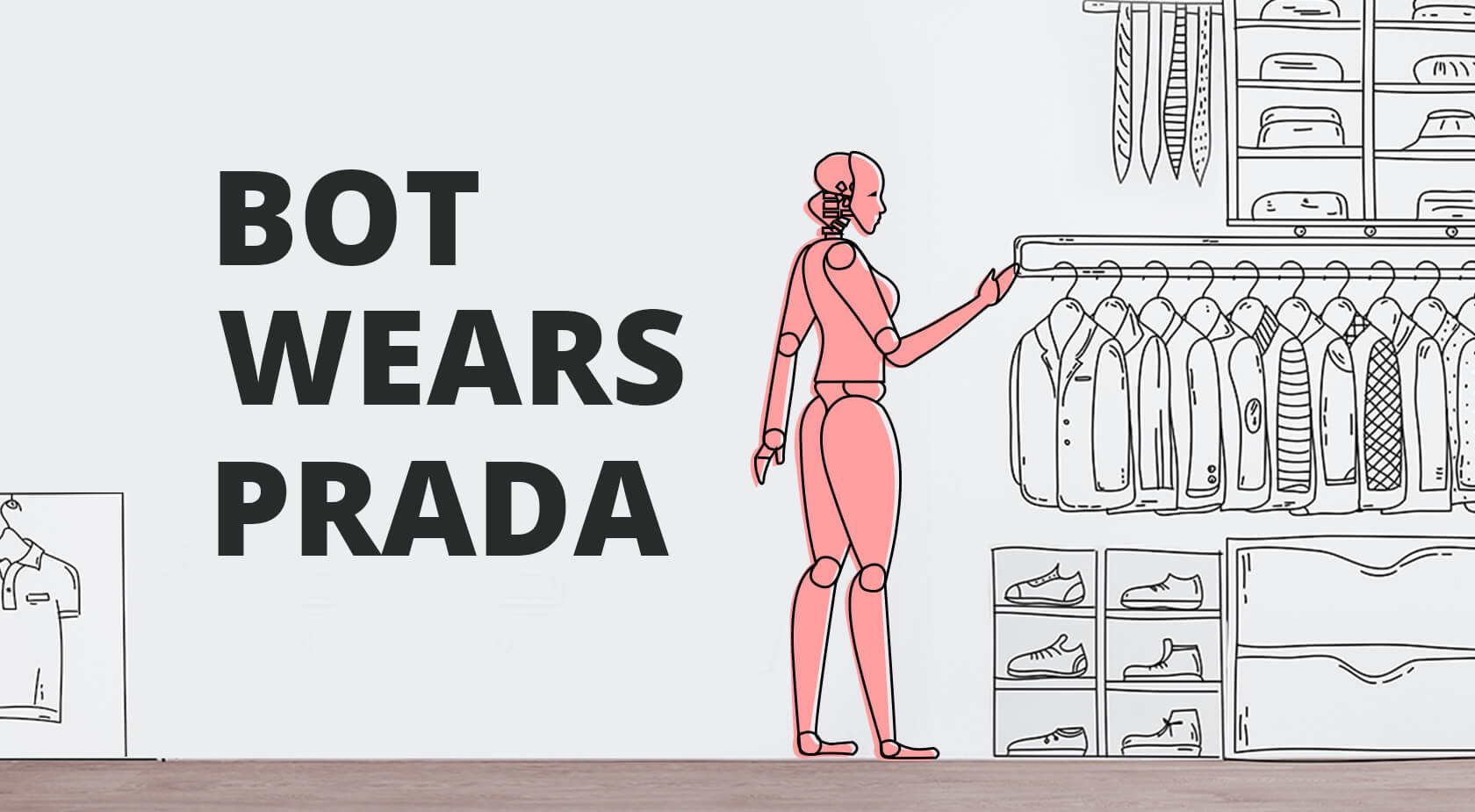
New York, London, Milan, Paris... September is hot fashion week season, so we decided to focus on fashion ecommerce this time.
The global fashion industry value represents 2% of the global Gross Domestic Product and amounts to an estimated $3 trillion. Apparel being classified by the World Bank in the broader category of manufacturing, represented 15% of the global GDP in 2016.
Thought, a decade ago, there was skepticism at the idea of selling clothes online, currently, apparel is one of the biggest growth stories on the product-based side of the digital commerce universe. If it were a country, it would represent the seventh-largest economy in the world.
eCommerce has shifted fashion industry from strictly brick-and-mortar space to a more mobile and social media-friendly one, which has opened up in applications of AI in fashion that may help to mold the future of the customer experience.
Lots of retailers are trying to differentiate themselves creating curated experiences for their customers and artificial intelligence powers these personalized online experiences.
Artificial Intelligence is on the rise behind-the-scenes at businesses across sectors, and a recent Forrester report showed that the majority of companies believe that AI will make marketing teams more efficient and lighten their workload. AI has already been in use in a number of industries. However, some industries are set to benefit more than others. Fashion and artificial intelligence have always seemed likely bedfellows, for example.
Retailers use AI as a huge value-add to personalize customer journeys. According to a report by Boston Consulting Group: retailers with personalization strategies implemented obtain sales gains of 6-10% (rate two-to-three times faster than other retailers). It also could boost rates of return of about 59% by 2035, from Accenture perspective.
According to various research, over 85% of business activities with shoppers will be operated completely by AI by 2020. The value of AI involves its ability to accurately and effectively complete tasks whereas in contrast handling them manually would be extremely complicated and time-consuming.
The opportunities delivered by AI seems potentially transformative, thus a fair bit of retailers are exploiting it by now. In case fashion brands want to be in the nature of things nowadays, they do need to be investing in AI to create personalize consumer experience. While some still continue to think over the potential of the technology, other fashion brands are reaping the fruits today. Let’s take a look at some of the most exciting examples of AI in action.
AI-powered visual search
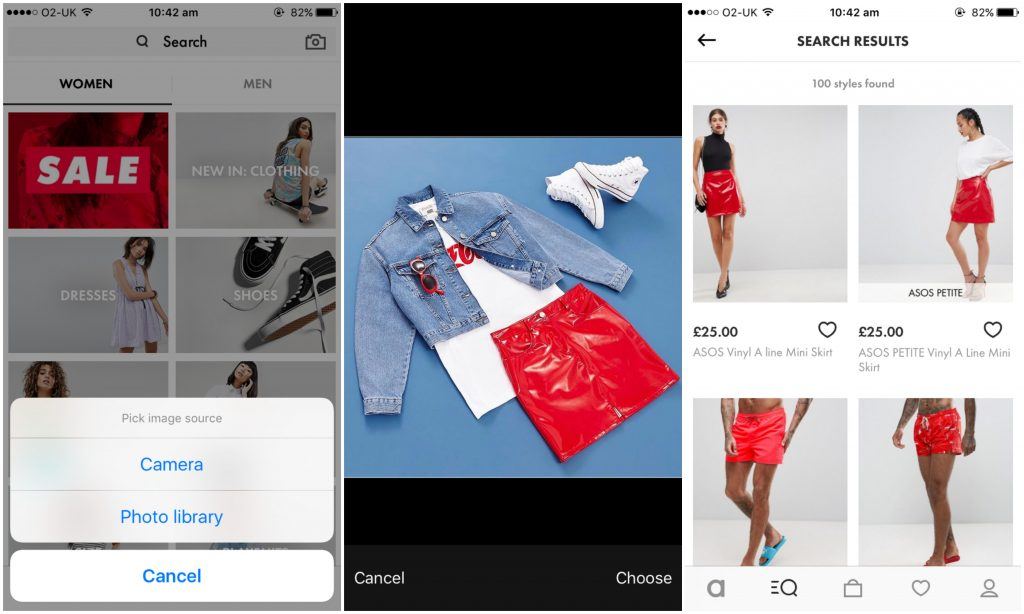
The considerable majority of decisions within fashion industry are made with some form of visual input. It doesn't make much difference whether that's a shopper deciding which clothing to buy or any buyer discovering the latest fashion trends, we all rely on visual input when it comes to retail.
Shoppers don’t want to spend hours searching for clothes online, especially on a touchscreen. People like to browse visually – they don’t want to do it with text. Visual search presents shoppers with clothes that look and feel like the ones they are browsing. Instead of size and color alone, they can find items with the same style or detail.
The technology investigates customers' browsing and shopping histories and displays items matching their preferences and thus provides personalized shopping recommendations. It uses AI and tagging to demonstrate similar products, tailored product recommendations, homepages personalized for each shopper and much more.
ASOS (online fashion retailer) are employing recent development in computer pattern recognition technology so as to create a visual search feature to be used in their mobile app. Having established that the overwhelming majority of their sales and orders are made using mobile devices, the company has decided to integrate new functionality allowing users to upload photographs as search requests. ASOS visual search turns the user’s smartphone camera into a discovery tool, allowing them to take a picture of a product. By identifying object color, shape and pattern, the app starts searching for items that match to the item pictured or are similar thereto.
This not only does it drive sales, but also increases consumer confidence by providing a greater sense of agency over their purchase choices. ASOS as an online-only platform has always been on top of the world of digital innovation in fashion.
Stock optimisation
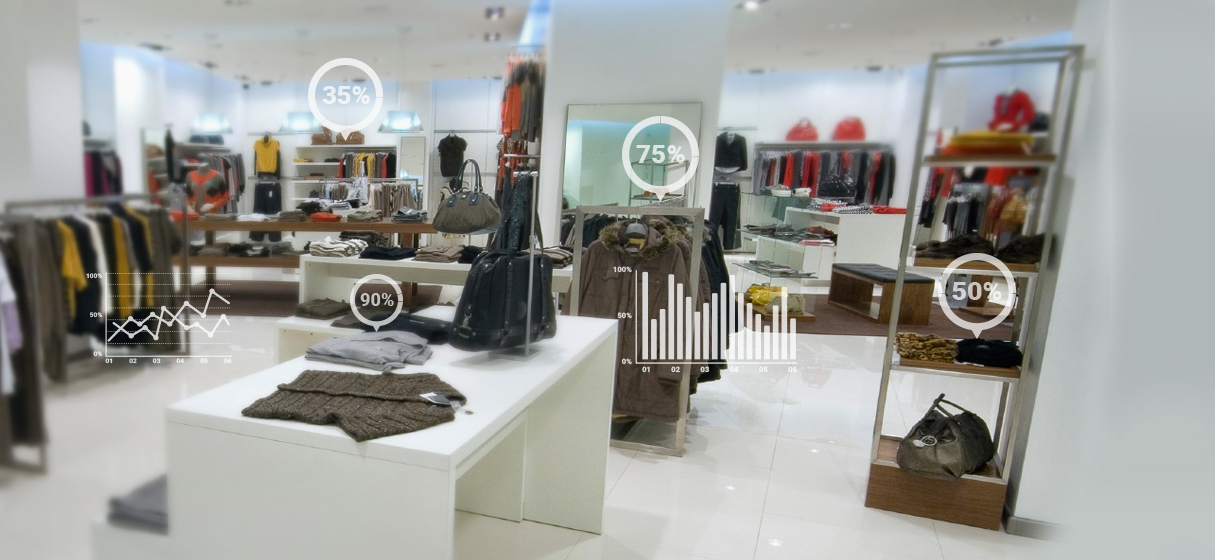
There is nothing new about the need to keep shelves stacked and stock up to date. But with stores and warehouses hooked up to increasingly busy and complex ecommerce sites, there has never before been such a need for speed. The solution highlighted one of the most important and potentially valuable uses of AI, especially in fast fashion, where huge volumes of product moves in and out of warehouses barely touching the shelves is replenishment optimisation.
The use of chatbots
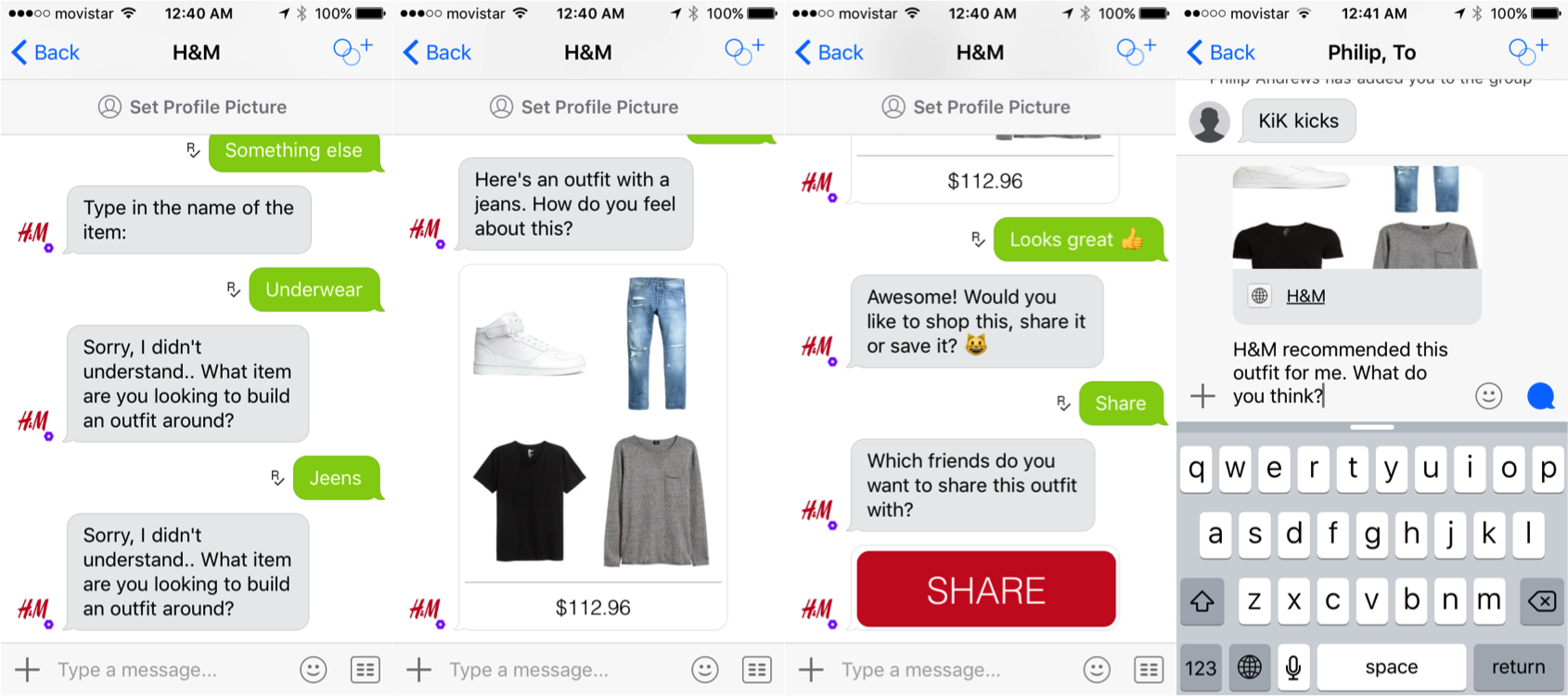
The chatbot is here, there and everywhere. Most of us have happily chatted away with AI chatbot customer service agents – inappropriately or not – as though they were nattering with a human. Whether their customers know it or not, some big retailers are using chatbots as live agents on their customer service lines and to help steer shoppers to products.
And while plenty of people will still say they would rather a human being was on the other end when getting in touch with a retailer, not everyone agrees. A survey by IBM last year revealed that 65% of millennials say they prefer to be greeted by a chatbot than a human agent. So bots are not just a way of cutting back costs on call centers – they are preferred by many users and are more sophisticated than humans when it comes to searching vast quantities of information.
Burberry customers are greeted by a chatbot on its Facebook messenger site; H&M communicates with customers via messaging app Kik, which uses a bot; and a number of retailers’ ecommerce platforms guide shoppers through the browsing process using AI-driven microsites backed up by a chatbot agent.
For example, Shop Direct (multi-brand online retailer) takes it a step further and is collaborating with IBM Watson in order to create AI chatbot able to exercise sentiment analysis to disclose shopper's mood, on the grounds of message tone and word usage. Such an approach is aimed to help customer service support to free its workforce from recurring duties and focusing directly on interactions that do help customers.
We see a growing number of companies are gaining insight on developing fashion bots acting as virtual assistants for efficient visual search.
Intelligent recommendations
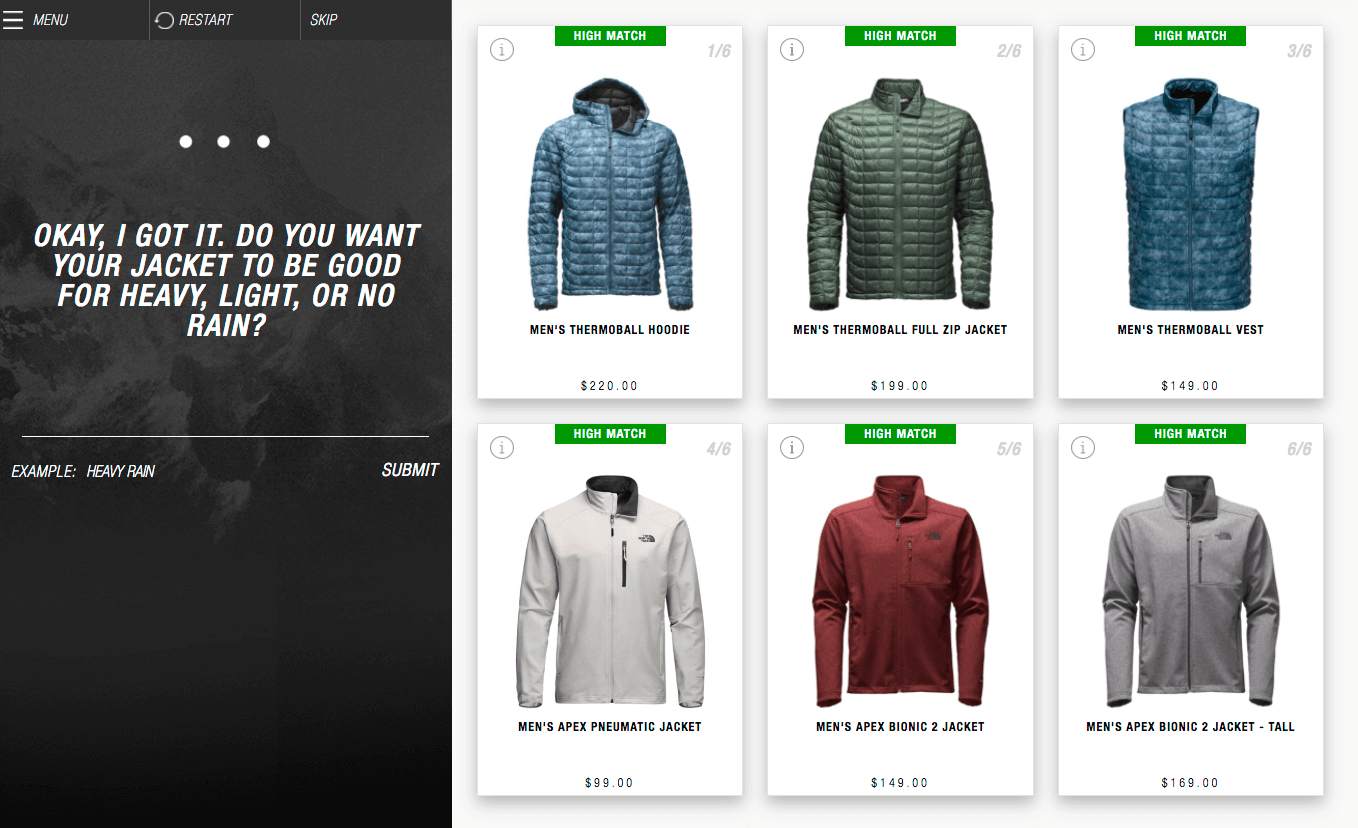
Since not long after ecommerce began to take off, retailers have been offering suggestions to shoppers based on previous purchases. AI takes this to another level.
Using AI to process a variety of data about the customer, from the usual characteristics such as height and weight to more specific details such as where in the world they’re off to, North Face offers shoppers gear customised for each trip. North Face is using IBM's Watson AI to make intelligent recommendations to shoppers.
Image recognition to detect trend
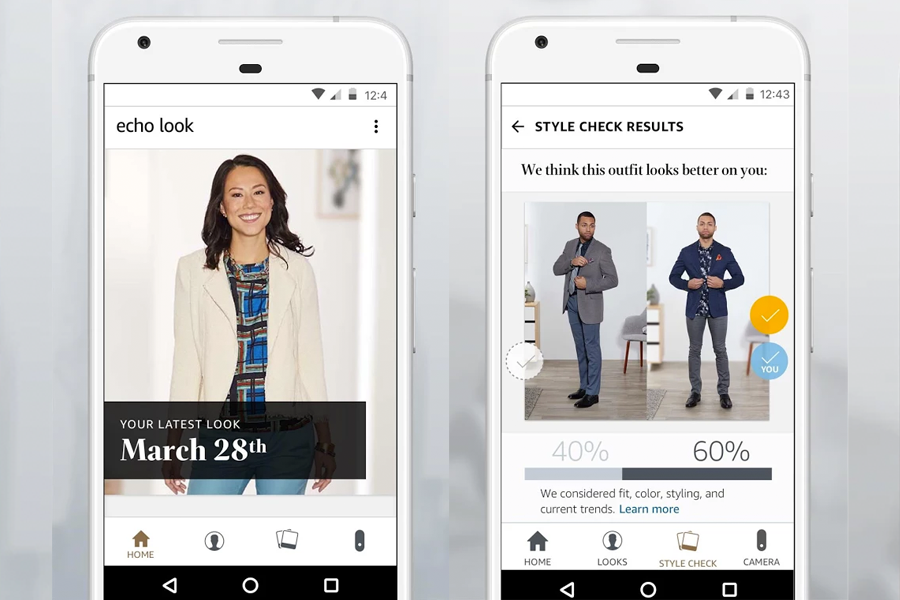
Several companies these days are trying to use AI for predicting future fashion trends. One o them is Amazon.
Seems like that Amazon has turned focus toward fashion. The company has recently announced quite a few new fashion-related initiatives, among them fashion service, new brands and more. Amazon has also been employing its AI and machine learning together with fashion.
In an effort to personalize the online clothes shopping experience to the maximum extent, Amazon launched own in-house clothing line, Prime Wardrobe (service bringing the fitting room to your), built Echo Look (hands-free camera and style assistant) during the past few years.
The e-commerce conglomerate has quietly revealed a radical new algorithmic approach to fashion, aimed at spotting fashion trends and, eventually, shaping them. The new system will analyze posts in social media with limited information they offer (like clothing tags or labels) in order to determine what is fashionable just now or will be soon. Having obtained the data and analysis, new Amazon’s AI fashion designer theoretically would be capable of pushing more fashionable apparel brands to the front of its giantlike e-commerce marketplace.
MIT Technology Review surveyed scientists and found out they are pretty skeptical of Amazon’s AI’s ability to divine fashion trends whenever in the measurable future. According to scientists, human clothing designers should still handle the bulk of the responsibility, though being assisted by fashion AI if need be.
So, Amazon is hungry for its share of the apparel market and its latest development—an AI fashion designer—could accelerate its dominance in the sector.
Amazon isn’t the only one working in developing fashion AI systems able to predict style trends. Scientists at the National University of Taiwan built an AI system able to comb through images and identify and classify styles accurately and then anticipate what will be fashionable in the following season.
Lots of companies are heavily diving into AI lately, assuming that advanced AI algorithm can be the new answer to enhance efficiency and accuracy for personalization in fashion ecommerce.
As leading brands set the tone with the use of AI, we would expect consumers to grow accustomed to these features overtime and for the field to grow increasingly competitive as AI is more widely implemented.
